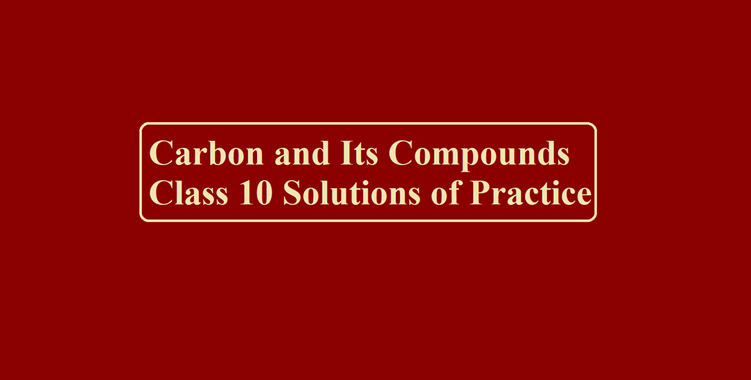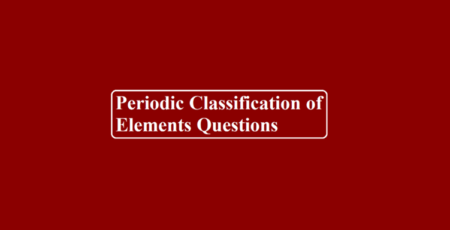Carbon and Its Compounds Class 10 Solutions of Practice Questions
Carbon and Its Compounds Class 10 Solutions
Ans 1. (i) CH3Cl Chloromethane
(ii) C2H5Cl Chloroethane
Ans 2. Covalent compounds have low melting and boiling points due to small intermolecular forces of attraction between the atoms.
Ans 3. (i) Alcohol group
(ii) Carboxylic acid group
Ans 4. Unsaturated hydrocarbons have more amount of carbon, therefore burn with smoky flame due to incomplete combustion.
Ans 5. (i) Valency of each carbon atom in an alkane is four.
(ii) Valency of each carbon atom in an alkyne is four.
Ans 6. (i) Catenation
(ii) Tetravalency of carbon
Ans 7. Soap reacts with Ca2+ and Mg2+ ions present in hard water to form scum.
Ans 8. In the structure of a diamond, all four valence electrons of carbon are involved in the formation of covalent bonds. Thus, no free electrons are available. Whereas, in the structure of graphite, three electrons in the valence shell of carbon are involved in covalent bond formation and the fourth electron is free to move. Therefore, graphite is a good conductor of electricity.
Ans 9. (a) Carbon forms a large number of compounds since carbon is small in size and can form stable covalent bonds (catenation) and it shows tetravalency.
(b) Air holes of the gas burner are made open (adjusted) so that air can pass through, which is needed for complete combustion so that heated vessels do not get blackened.
Ans 10. The purple color of KMnO4 decolorises and ethanoic acid will be formed
C2H5OH ——Alk KMnO4 —–àCH2 COOH
Ans 11. (b) Ni
Ans 12. (a) only single bonds
Ans 13. (b) CH4
Ans 14. (d) Lamp black
Ans 15. (b) Ethane
Ans 16. (d) LPG
Ans 17. (c) They all contain double bond
Ans 18. (a) Addition reaction
Ans 19. (c) Graphite is a bad conductor of heat and electricity.
Ans 20. (c) Carbon dioxide and water
Ans 21. (a) Glycerol
Ans 22. (a) 14 a.m.u and CH2 respectively
Ans 23. (d) CCl4
Ans 24. (b) Molecular formula
Ans 25. (b) Unsaturated, as sooty deposit represents unburnt hydrocarbons
Ans 26. (d) Sugar-ethanol
Ans 27. (b) Cyclohexane
Ans 28. (b) carbon monoxide in traces and carbon dioxide.
Ans 29. (a) Both assertion (A) and reason (R) are true and reason (R) is the correct explanation of assertion (A).
Ans 30. (a) Both assertion (A) and reason (R) are true and reason (R) is the correct explanation of assertion (A).
Ans 31. (d) Assertion (A) is false but reason (R) is true. Carbon compounds are mainly poor conductors of electricity.
Ans 32. (d) Assertion (A) is false but reason (R) is true.
Ans 33. (d) Assertion (A) is false but reason (R) is true.
Ans 34. (a) Both assertion (A) and reason (R) are true and reason (R) is the correct explanation of assertion (A).
Ans 35. (b) Both assertion (A) and reason (R) are true but reason (R) is not the correct explanation of assertion (A).
Carbon and Its Compounds Class 10 Practice Questions



